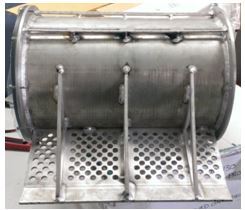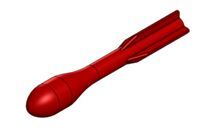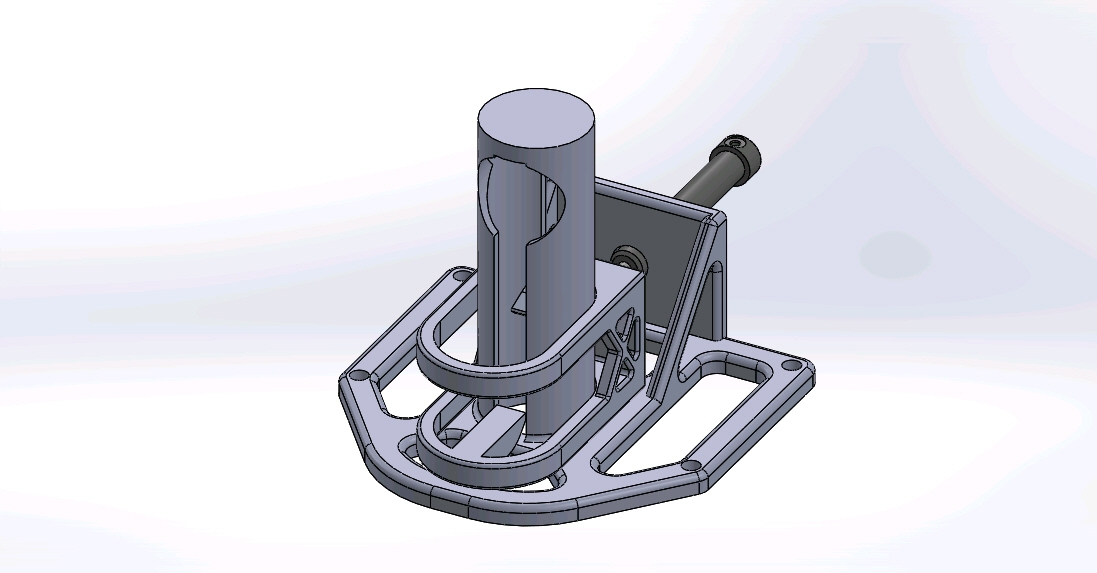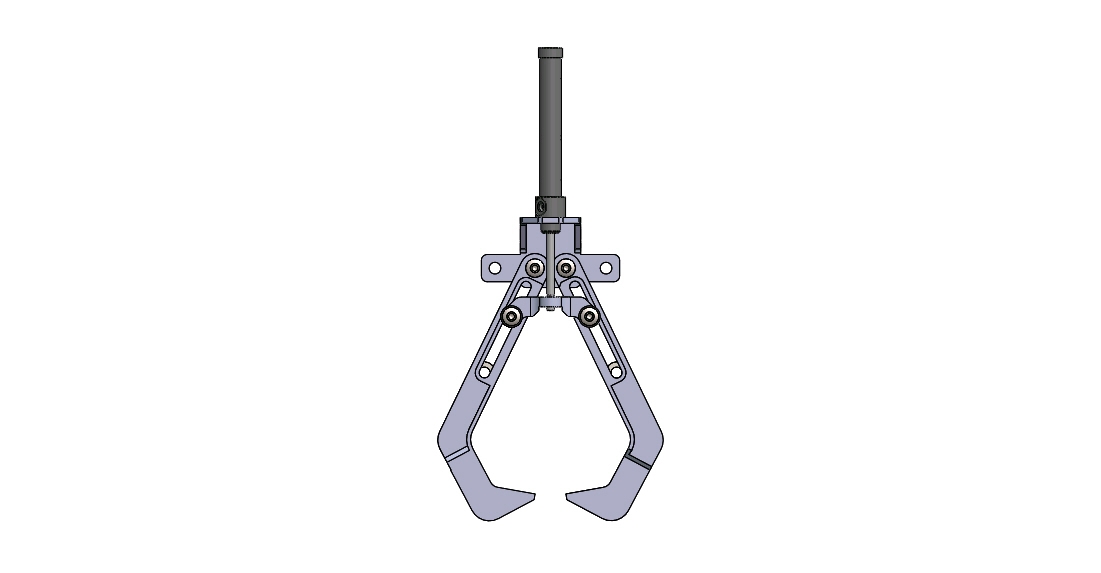Structure
BumbleBee’s mechanical structure is mainly made up of 2 piece aluminium, the frame and the hull. The hull houses our electronics and forward camera while the frame serves as the intermediary structure to hold the thrusters, compressed air tank, hydrophones, DVL, downward camera, manipulators. All nuts and bolts on the hull and frame are made out of stainless steel.
Aluminium Hull

- Strong
- Light
- Resist corrosion
- Good thermal conductivity
C-Channel Frame

- Welded together to maintain rigidity
- Perforated with rectangular holes
- Allow flexibility in component mounting positions
Polycarbonate Front
- Visual check on electronics w/o breaking seal
Supporting Flanges
- Ribbed to give additional strength
- Punch pattern for weight optimization
Dovetail O-Ring Flange Seal Design
- Secure placement of o-ring
- Allow convenient removal of end cap
- Increased sealing pressure with depth
Pneumatics Systems
The manipulator system on the vehicle comprises of two torpedo launchers, two marker droppers, a grabber and a rotary arm. These manipulators are actuated through the use of Festo pneumatic components.
Air Source

- 68 cubic inch carbon fiber Ninja paintball compressed air tank
- Air pressure regulated from 3000psi down to 100psi with a dual stage regulator system before being fed to the manipulators
Torpedoes System

A Festo quick exhaust valve, SE-¼, is connected between the pressure chamber and barrel.
Firing the torpedoes:
- Air supply to the pressure chamber is cut
- Almost immediate release of pressurized air from quick exhaust valves to barrel
- Rapid expansion of gas propels the torpedoes towards the target from their barrels.
Dropper Systems

- Markers designed with large fins and stainless steel tip to ensure fast and accurate trajectory
- Placed in a 3D printed holder
- When actuated, the piston of the cylinders will retract, releasing the markers from its holder.
Grabber

- Each set of claws is actuated by a double-acting pneumatic cylinder
- 5/2 way solenoid valves control the flow of air into the cylinders to open the and close the claws
- Cylinders of both arms are connected in parallel to the same solenoid valve, both set of claws are activated in unison to maintain a two-point contact for stability.
Rotary Actuator: Festo DSM-16

- Responsible for the turning of the steering wheel double-acting rotary vane design
- Able to rotating up to 270 degrees in both clockwise and anti-clockwise directions
- 5/2 way solenoid valves are also used to control the flow of air for rotation
- Can be retracted into the vehicle by a pneumatic linear actuator
- Prevents field of vision from potential blockage